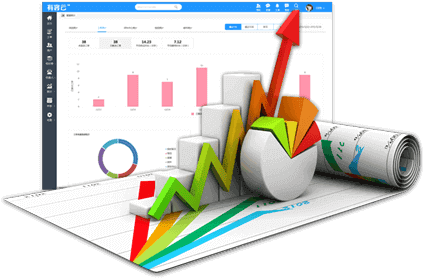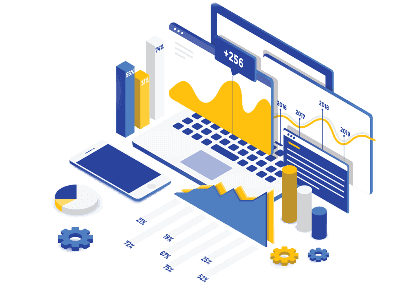 If you're in search of reliable and proficient assistance for your research endeavors, we have what you need. At Thesis-Dissertation Writing Services, we take pride in offering analysis services, tailored to meet the unique needs of your research project. In today's data-driven world, efficient data analysis plays a crucial role in ensuring the success and credibility of any academic study. Whether you are a student working on your dissertation or a researcher conducting a complex study, our team of experienced data analysts is here to guide you through the intricacies of SPSS and streamline your research process. Our team comprises highly skilled Ph.D. professionals with extensive expertise in utilizing SPSS to its fullest potential. They possess a deep understanding of various research methodologies and statistical techniques, enabling them to interpret your data accurately and derive meaningful insights. We value the uniqueness of each PhD research project. Our approach is personalized, and we collaborate closely with our clients to comprehend their research objectives fully. This ensures that our data analysis services align seamlessly with your research questions and hypotheses. Furthermore, we are committed to delivering timely results without compromising on the quality of analysis. Our efficient workflow and dedicated project managers guarantee that you receive your analyzed data promptly. So, if you are seeking reliable, accurate, and timely data analysis help for your PhD dissertation or research project, we are your ultimate destination. Let us take the burden off your shoulders and present to you superior SPSS Data Analysis Services for your Ph.D. research, allowing you to focus on the academic excellence you aspire to achieve.
If you're in search of reliable and proficient assistance for your research endeavors, we have what you need. At Thesis-Dissertation Writing Services, we take pride in offering analysis services, tailored to meet the unique needs of your research project. In today's data-driven world, efficient data analysis plays a crucial role in ensuring the success and credibility of any academic study. Whether you are a student working on your dissertation or a researcher conducting a complex study, our team of experienced data analysts is here to guide you through the intricacies of SPSS and streamline your research process. Our team comprises highly skilled Ph.D. professionals with extensive expertise in utilizing SPSS to its fullest potential. They possess a deep understanding of various research methodologies and statistical techniques, enabling them to interpret your data accurately and derive meaningful insights. We value the uniqueness of each PhD research project. Our approach is personalized, and we collaborate closely with our clients to comprehend their research objectives fully. This ensures that our data analysis services align seamlessly with your research questions and hypotheses. Furthermore, we are committed to delivering timely results without compromising on the quality of analysis. Our efficient workflow and dedicated project managers guarantee that you receive your analyzed data promptly. So, if you are seeking reliable, accurate, and timely data analysis help for your PhD dissertation or research project, we are your ultimate destination. Let us take the burden off your shoulders and present to you superior SPSS Data Analysis Services for your Ph.D. research, allowing you to focus on the academic excellence you aspire to achieve.
Why is SPSS the Best Software For Ph.D. Dissertation Data Analysis?
SPSS is renowned for its versatility and robustness when it comes to handling statistical data. Here are some reasons why SPSS is often considered the best software package for expert PhD dissertation data analytics support and statistical data analysis:
- User-Friendly Interface: SPSS provides a user-friendly interface that is easy to navigate, making it accessible to both novice and experienced researchers. The point-and-click functionality reduces the need for complex programming, allowing researchers to focus on the data and analysis.
- Extensive Statistical Tools: It offers a wide range of statistical tools and tests, including descriptive statistics, correlation analysis, regression analysis, factor analysis, and more. This comprehensive suite of tools enables PhD researchers to explore and interpret their data thoroughly.
- Data Visualization Ability: SPSS allows researchers to create visually appealing graphs, charts, and plots to represent data effectively. This aids in presenting our PhD research dissertation findings clearly and making data-driven decisions.
- Data Preparation: It streamlines the process of data preparation, including data cleaning, data transformation, and missing value handling. This ensures that the dissertation data used for the analysis is accurate and reliable.
- Smooth Integration with Other Software: SPSS can import and export data from various formats, making it compatible with other statistical and data management tools.
In the realm of academic research, especially at the doctoral level, the journey toward completing a dissertation is both exhilarating and daunting. This is why we stand at the forefront of this academic expedition, offering a beacon of expertise in data analytics that illuminates the path for Ph.D. students worldwide. We are synonymous with excellence, innovation, and an unwavering commitment to empowering the next generation of scholars with the analytical prowess required to navigate the complexities of their research landscapes. We are committed to providing unparalleled data analytics support to Ph.D. students embarking on the critical journey of dissertation research. Understanding the complexities and challenges of doctoral research, our mission is to empower students with the analytical tools and insights necessary for producing groundbreaking academic work. The road to completing your PhD dissertation is one of intellectual discovery and profound personal achievement. With us as your guide, you’re not just navigating this journey; you’re destined to redefine it. Reach out to us and discover how our expert PhD dissertation data analytics support can transform your dissertation into a beacon of academic excellence.
How our SPSS Data Analysis Enhances Dissertation Data Management
As a specialized service provider in SPSS data analysis for dissertation data management, we offer several advantages to researchers and students:
- Expert Data Analysts: Our team consists of experienced data analysts proficient in using SPSS for various research domains. They can assist in designing the appropriate data analysis plan for your specific research objectives.
- Customized Analysis: We recognize that each research project is unique. Hence, our services are tailored to meet your specific research requirements, ensuring the most relevant and accurate analysis.
- Timely Delivery: We understand the importance of meeting deadlines, especially in academic settings. Our efficient data analysis process ensures the timely delivery of results, allowing you sufficient time to incorporate them into your dissertation.
- Interpretation Support: Besides conducting the analysis, our experts can provide a comprehensive interpretation of the results, helping you better understand the implications of the findings.
- Confidentiality: We prioritize data confidentiality and adhere to strict data protection protocols. Your research data will be handled with the utmost confidentiality and privacy.
SPSS continues to be the software of choice for statistical data analysis due to its user-friendly interface and comprehensive statistical tools. Proper data analysis using SPSS can significantly enhance research outcomes by providing valuable insights and supporting data-driven decision-making. Utilizing our SPSS data analysis services for PhD research for effective dissertation data management offers several benefits, including expert analysis, customized support, and timely delivery of results. When it comes to managing and analyzing dissertation data, we can be your trusted partner, ensuring the success of your research endeavors.
Dissertation Data Analysis Services & Statistical Analysis Experts
 Embarking on the journey of writing a dissertation is no small feat; it demands relentless research, unwavering dedication, and countless hours of hard work. Among the critical aspects of this academic endeavor is the data analysis stage, which serves as the backbone of your research findings. We recognize the significance of this crucial phase and offer top-tier dissertation results analyzing services to assist scholars in unlocking the true potential of their research. In the realm of academia, data analysis acts as the gateway to drawing meaningful conclusions and making insightful interpretations. Our team of expert data analysts understands the complexity of handling diverse datasets and employs advanced methodologies to extract pertinent information from raw data. From qualitative to quantitative analysis services, we cater to a wide array of research domains, ensuring that your findings are rigorously scrutinized, and the results hold utmost credibility. What makes our Data Analysis Services using SPSS necessary is not only our proficiency in handling complex statistical techniques and cutting-edge software but also our commitment to tailoring the analysis according to your research objectives. We comprehend that each research study is unique, and thus, our team devotes personalized attention to every project, comprehending its distinct requirements. As you embark on this academic voyage, trust us to be your reliable companion, providing the expertise and support you need to transform raw data into valuable insights. With our statistical data analysis service, you can stride confidently toward academic success and contribute significantly to your chosen field of study. Let us elevate your dissertation to new heights with our statistical analysis skills.
Embarking on the journey of writing a dissertation is no small feat; it demands relentless research, unwavering dedication, and countless hours of hard work. Among the critical aspects of this academic endeavor is the data analysis stage, which serves as the backbone of your research findings. We recognize the significance of this crucial phase and offer top-tier dissertation results analyzing services to assist scholars in unlocking the true potential of their research. In the realm of academia, data analysis acts as the gateway to drawing meaningful conclusions and making insightful interpretations. Our team of expert data analysts understands the complexity of handling diverse datasets and employs advanced methodologies to extract pertinent information from raw data. From qualitative to quantitative analysis services, we cater to a wide array of research domains, ensuring that your findings are rigorously scrutinized, and the results hold utmost credibility. What makes our Data Analysis Services using SPSS necessary is not only our proficiency in handling complex statistical techniques and cutting-edge software but also our commitment to tailoring the analysis according to your research objectives. We comprehend that each research study is unique, and thus, our team devotes personalized attention to every project, comprehending its distinct requirements. As you embark on this academic voyage, trust us to be your reliable companion, providing the expertise and support you need to transform raw data into valuable insights. With our statistical data analysis service, you can stride confidently toward academic success and contribute significantly to your chosen field of study. Let us elevate your dissertation to new heights with our statistical analysis skills.
What you Must Understand about Spss Dissertation Data Analysis
- The Role of Data Analysis: Dissertation data analysis is not just about crunching numbers; it is about extracting valuable information from the collected data that supports or negates the research hypothesis. It helps in drawing meaningful conclusions and contributes to the existing body of knowledge.
- Types of Data Analysis: There are various methods of data analysis, such as descriptive statistics, inferential statistics, qualitative analysis, content analysis, and thematic analysis. The choice of analysis method depends on the nature of the data and the research questions.
- The Need for Accuracy: Inaccurate data analysis can lead to misleading conclusions, which can jeopardize the overall quality of the dissertation. Ensuring accuracy and reliability is essential to uphold the integrity of the research.
Unlock your Dissertation Data's True Potential With our Data Analysis Service
Our dissertation data analysis services are provided by experienced data analysts who are well-versed in various data analysis techniques and software tools. They can handle complex data sets and deliver insightful results. We also understand that every dissertation is unique and requires a customized approach to data analysis. Our experts work closely with the researchers to understand their research objectives and tailor the analysis accordingly. We not only perform the analysis but also assist in interpreting the results in a clear and meaningful manner. Our team uses data visualization techniques to present complex findings in a visually appealing format. For dissertations heavily reliant on statistical analysis, our team can provide comprehensive statistical support to ensure the accuracy and robustness of the results.
Why Trust Our SPSS Dissertation Data Analysts for Quality Guaranteed Results?
We bridge the gap between complex data and academic success. Our dissertation data analysis experts support students striving to make a profound impact through their research projects. With a team of seasoned experts in statistics and data science, we provide meticulous, customized support that transforms raw data into compelling insights. Our approach is rooted in a deep understanding of the challenges faced during the dissertation process, enabling us to offer solutions that are not only practical but also ethically sound and academically rigorous.
- We Ensure Accuracy: We place a strong emphasis on data accuracy and take meticulous steps to validate the data and the analysis process. Our rigorous quality checks minimize the possibility of errors and enhance the credibility of the research.
- Our SPSS experts Uphold Confidentiality and Privacy: We prioritize the confidentiality of our client's data and adhere to strict privacy policies. Your data will be handled securely and will not be shared with any third parties without your consent.
- We Guarantee Timely Delivery of services: We understand the importance of deadlines in academic projects. Our efficient workflow and dedicated team ensure that you receive the analyzed results within the agreed-upon timeframe.
- Our SPSS experts Do Revisions and Provide Support: We are committed to customer satisfaction. If you need any revisions or further assistance, our team is always ready to address your concerns and provide additional support.
Data analysis is a critical step that can significantly impact the outcome of your research. Entrusting this task to expert analysis services can unlock the true potential of your data, leading to more valuable insights and conclusions. Our SPSS dissertation data analysis services offer a reliable and quality-guaranteed approach to help you successfully navigate this essential phase of your academic journey. By ensuring accuracy, confidentiality, and timely delivery, we aim to contribute to the success of your dissertation and academic endeavors.




 Undertaking a dissertation is a significant academic milestone, a testament to your expertise and dedication in your chosen field. As you approach the culminating phase of your academic journey, the data analysis portion can be both daunting and crucial. We understand the challenges that lie in unraveling complex data sets and extracting meaningful insights, and that's why we offer exceptional
Undertaking a dissertation is a significant academic milestone, a testament to your expertise and dedication in your chosen field. As you approach the culminating phase of your academic journey, the data analysis portion can be both daunting and crucial. We understand the challenges that lie in unraveling complex data sets and extracting meaningful insights, and that's why we offer exceptional  We guarantee you the
We guarantee you the 